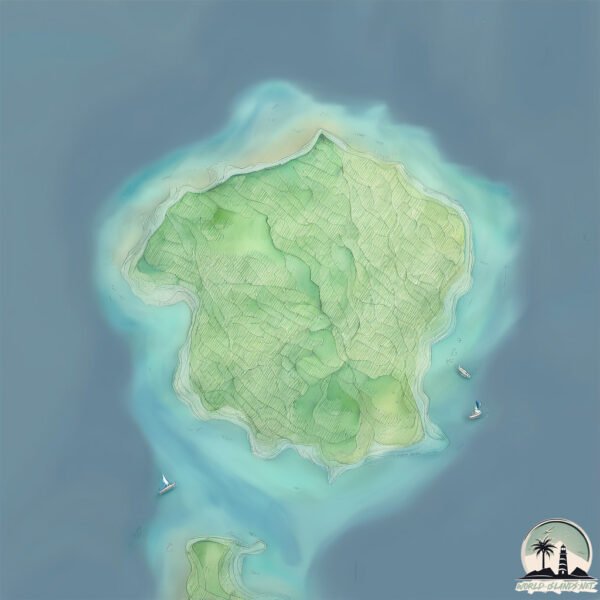Welcome to Izena Jima , a Temperate island in the Eastern China Sea, part of the majestic Pacific Ocean. This guide offers a comprehensive overview of what makes Izena Jima unique – from its geography and climate to its population, infrastructure, and beyond. Dive into the details:
Geography and size of Izena Jima
Size: 13.9 km²Coastline: 19.3 kmOcean: Pacific OceanSea: Eastern China SeaContinent: Asia
Izena Jima is a Medium Island spanning 14 km² with a coastline of 19 km.
Archipel: Ryukyu Islands – A chain of Japanese islands stretching southwest from Kyushu to Taiwan, known for their unique Okinawan culture and subtropical climate.
Tectonic Plate: Philippine Sea – An oceanic tectonic plate beneath the Philippine Sea, east of the Philippines. It’s involved in complex interactions with the surrounding Eurasian, Pacific, and Indo-Australian plates, leading to significant volcanic and seismic activity in the region.
The geographic heart of the island is pinpointed at these coordinates:
Climate and weather of Izena Jima
Climate Zone: TemperateClimate Details: Humid Subtropical ClimateTemperature: Hot Summer
Climate Characteristics: With continuous rainfall and hot summers, this climate is common in some coastal regions, supporting diverse vegetation.
Topography and nature of Izena Jima
Timezone: UTC+09:00Timezone places: Asia/TokyoMax. Elevation: 51 m Mean Elevation: 24 mVegetation: Agricultural MosaicTree Coverage: 39%
The mean elevation is 24 m. The highest elevation on the island reaches approximately 51 meters above sea level. The island is characterized by Plains: Flat, low-lying lands characterized by a maximum elevation of up to 200 meters. On islands, plains are typically coastal lowlands or central flat areas.
Dominating Vegetation: Agricultural Mosaic
Vegetation: 9 vegetation zones – Very Highly Diverse Island
Infrastructure and Travelling to Izena Jima
Does the island have a public airport? no .
Does the island have a major port? no .
The mean population of Izena Jima is 101 per km². Izena Jima is Moderately Inhabited. The island belongs to Japan .
Continuing your journey, Ilheya is the next notable island, situated merely km away.
EXPLORING a REMOTE ISLAND in our Japanese MINI TRUCK CAMPER, Izena Island Okinawa!
We take our first trip in our DIY Mini truck Camper to a remote Island in Okinawa Japan. We have been building our Mini truck ...
EXPLORING a REMOTE ISLAND in our Japanese MINI TRUCK CAMPER, Izena Island Okinawa!
We take our first trip in our DIY Mini truck Camper to a remote Island ...
We take our first trip in our DIY Mini truck Camper to a remote Island in Okinawa Japan. We have been building our Mini truck ...
Izena Island
izenaisland #okinawa #japan.
izenaisland #okinawa #japan.
Izena Island
Taking the ferry to Izena - a beautiful laid-back island off the ...
Taking the ferry to Izena - a beautiful laid-back island off the northwest coast of Okinawa. (Due to COVID-19, visiting Izena has ...
Japan is classified as Developed region: G7: Group of Seven – Major advanced economies, including Canada, France, Germany, Italy, Japan, the United Kingdom, and the United States. The level of income is High income: OECD.
News – Latest Updates and Headlines from Izena Jima
Stay informed with the most recent news and important headlines from Izena Jima. Here’s a roundup of the latest developments.
Loading...
Please note: The data used here has been primarily extracted from satellite readings. Deviations from exact values may occur, particularly regarding the height of elevations and population density. Land area and coastline measurements refer to average values at mean high tide.

